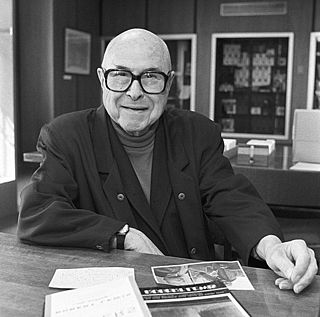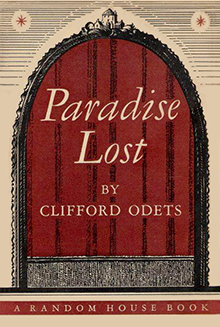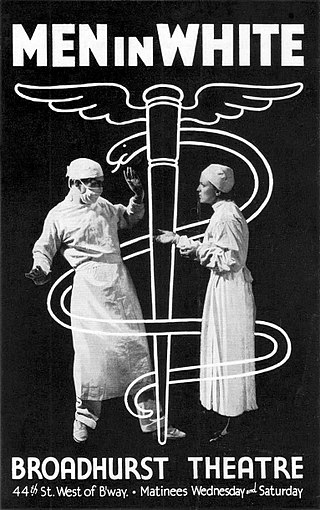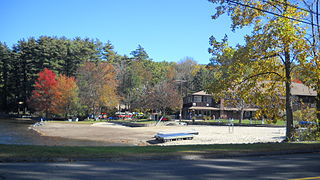Related Research Articles

Clifford Odets was an American playwright, screenwriter, and actor. In the mid-1930s, he was widely seen as the potential successor to Nobel Prize-winning playwright Eugene O'Neill, as O'Neill began to withdraw from Broadway's commercial pressures and increasing critical backlash. From January 1935, Odets's socially relevant dramas were extremely influential, particularly for the remainder of the Great Depression. His works inspired the next several generations of playwrights, including Arthur Miller, Paddy Chayefsky, Neil Simon, and David Mamet. After the production of his play Clash by Night in the 1941–42 season, Odets focused his energies primarily on film projects, remaining in Hollywood for the next seven years. He returned to New York in 1948 for five and a half years, during which time he produced three more Broadway plays, only one of which was a success. His prominence was eventually eclipsed by Miller, Tennessee Williams, and in the early- to mid-1950s, William Inge.

The Group Theatre was a theater collective based in New York City and formed in 1931 by Harold Clurman, Cheryl Crawford and Lee Strasberg. It was intended as a base for the kind of theatre they and their colleagues believed in— a forceful, naturalistic and highly disciplined artistry. They were pioneers of what would become an "American acting technique", derived from the teachings of Konstantin Stanislavski, but pushed beyond them as well. The company included actors, directors, playwrights, and producers. The name "Group" came from the idea of the actors as a pure ensemble; a reference to the company as "our group" led them to "accept the inevitable and call their company The Group Theatre."
Waiting for Lefty is a 1935 play by the American playwright Clifford Odets; it was his first play to be produced. Consisting of a series of related vignettes, the entire play is framed by a meeting of cab drivers who are planning a labor strike. The framing uses the audience as part of the meeting.
Golden Boy is a drama by Clifford Odets. The play was initially produced on Broadway by The Group Theatre in 1937. Odets' biggest hit was made into a 1939 film of the same name, starring William Holden in his breakthrough role, and also served as the basis for a 1964 musical with Sammy Davis, Jr.

Harold Edgar Clurman was an American theatre director and drama critic. In 2003, he was named one of the most influential figures in U.S. theater by PBS. He was one of the three founders of New York City's Group Theatre (1931–1941). He directed more than 40 plays in his career and, during the 1950s, was nominated for a Tony Award as director for several productions. In addition to his directing career, he was drama critic for The New Republic (1948–1952) and The Nation (1953–1980), helping shape American theater by writing about it. Clurman wrote seven books about the theatre, including his memoir The Fervent Years: The Group Theatre and the Thirties (1961).

Arthur Gordon Smith was an American stage, film, and television actor, best known for playing supporting roles in Hollywood productions of the 1940s.

Rose McClendon was a leading African-American Broadway actress of the 1920s. A founder of the Negro People's Theatre, she guided the creation of the Federal Theatre Project's African American theatre units nationwide and briefly co-directed the New York Negro Theater Unit.

Robert Lewis was an American actor, director, teacher, author and founder of the influential Actors Studio in New York in 1947.

Awake and Sing! is a drama written by American playwright Clifford Odets. The play was initially produced by The Group Theatre in 1935.

The New Theatre, formerly Workers' Art Club and New Theatre League, is a community theatre company in the Inner West Sydney suburb of Newtown, Australia. Its origins are in the international New Theatre movement of the 1920s, and it is the oldest theatre company in continuous production in New South Wales.

Paradise Lost is a drama by Clifford Odets that takes place in 1932, during the Depression. The play was originally produced on Broadway by the Group Theatre in 1935. It was also filmed for television broadcast in 1971.

Golden Boy is a 1964 musical with a book by Clifford Odets and William Gibson, lyrics by Lee Adams, and music by Charles Strouse.
Julia Dorn Heflin was an American journalist, theatre producer and teacher. Throughout her long and varied career, Heflin taught drama with Lee Strasberg, worked on Broadway, staged a production of Clifford Odets's Waiting for Lefty on the streets of Moscow, and led the drama department at Mount Vernon College in Washington, D.C. for 22 years.

Men in White is a 1933 play written by American playwright Sidney Kingsley. It was produced by the Group Theatre, Sidney Harmon and James Ramsey Ullman, directed by Lee Strasberg with scenic design created by Mordecai Gorelik. It ran for 351 performances from September 26, 1933 to July 28, 1934 at the Broadhurst Theatre. The play won the 1934 Pulitzer Prize for Drama.

Pine Brook Country Club is a private lake association in Nichols, Connecticut, a village within the Town of Trumbull. It began when Benjamin Plotkin purchased Pinewood Lake and the surrounding countryside on Mischa Hill. Plotkin built an auditorium with a revolving stage and forty rustic cabins and incorporated as the Pine Brook Country Club in 1930. Plotkin's dream was to market the rural lakeside club as a summer resort for people to stay and enjoy theatrical productions. The Club remained in existence until productions were disrupted by World War II, and was reorganized as a private lake association in 1944.
Night Music is a 1940 play by Clifford Odets. Written in 1939 and produced by the Group Theatre, the play was a commercial failure, closing after 20 performances.
William John Challee was an American actor.
The Blue Light Theater Company was an off-Broadway theater company located in New York City primarily active in the late 1990s through 2001 and notable for the many celebrated actors associated with the company, including Joanne Woodward, Paul Newman, Frances McDormand, Billy Crudup, Marisa Tomei, and Marsha Mason, as well as many who have since gone on to have notable careers including Josh Radnor, T.R. Knight, Chris Messina, and Matthew Saldivar. Actor/ Artistic-Director Greg Naughton, and Darice O'Mara, Assistant to Paul Newman, founded Blue Light in 1995 with the stated mission of producing challenging, primarily larger-cast plays that would bring up-and-coming actors together with veteran artists in a spirit of apprenticeship. They began as an itinerant theater troupe, renting theaters from such venues as Primary Stages, HERE Arts Center, the Classic Stage Company, and Atlantic Theatre Company, before settling in for two seasons at the 55th Street Theatre and their final two seasons in the McGinn-Cazale Theatre. Mandy Greenfield joined as Blue Light’s producing manager in 1998. She and Peter Manning are credited with the artistic direction and selection of Blue Light’s final season, when Mr. Naughton took a sabbatical.
Jerome Thor was an American actor of the stage and screen. He is best known for his work in Broadway plays from 1935 through 1946, and on American television during the 1950s. He starred as Robert Cannon in Foreign Intrigue; a role which popularized the trench coat-wearing detective in public consciousness. His costume is part of the collection at the Smithsonian Institution.
The New Theatre in Melbourne, formerly Melbourne Workers' Theatre Group, was one of a number of branches of Australia's New Theatre movement established in the 1930s. This was a radical left theatrical movement which staged performances with a political message. The theatre group existed from 1936 until 2000.
References
- ↑ "New Theatre proves that art IS a weapon". Tribune . No. 746. New South Wales, Australia. June 25, 1952. p. 5. Retrieved November 20, 2022– via National Library of Australia.
- ↑ "New Theatre: Company history". Arts Centre Melbourne . Retrieved November 20, 2022.
- ↑ Mansbridge, Jane; Flaster, Katherine (Fall 2005). "Male chauvinist, feminist, sexist, and sexual harassment: different trajectories in feminist linguistic innovation". American Speech. 80 (3): 261. CiteSeerX 10.1.1.103.8136 . doi:10.1215/00031283-80-3-256. Archived from the original on September 26, 2022.